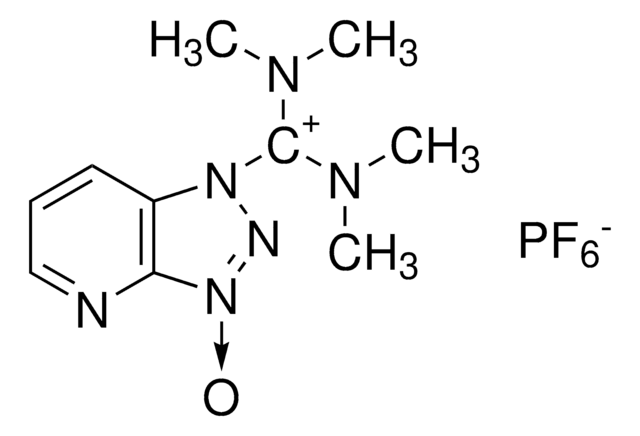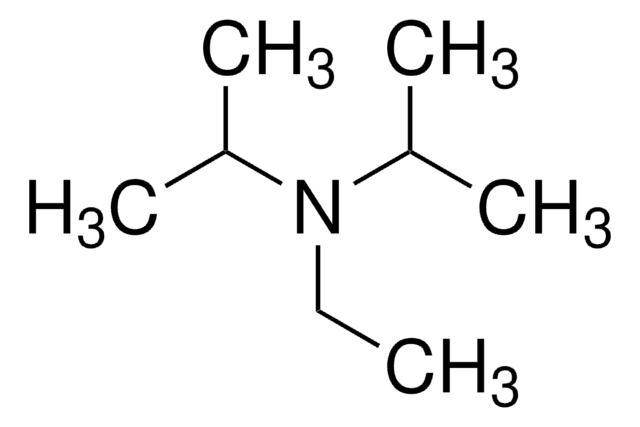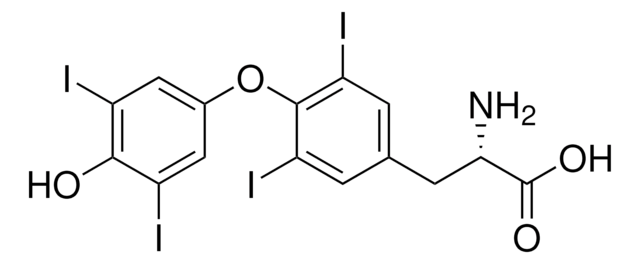About This Item
Recommended Products
form
liquid
Quality Level
concentration
3.6-4.4 M (back titration with NaOH)
3400-4400 mmol/L (back titration with NaOH)
4 M in methanol
SMILES string
N
InChI
1S/H3N/h1H3
InChI key
QGZKDVFQNNGYKY-UHFFFAOYSA-N
Looking for similar products? Visit Product Comparison Guide
Related Categories
General description
Application
- Integrated Approaches Revealed the Therapeutic Mechanisms of Zuojin Pill Against Gastric Mucosa Injury in a Rat Model with Chronic Atrophic Gastritis.: This study explores the multifaceted pharmacological effects of Zuojin Pill, employing ammonia solution in the experimental setup, which contributed to understanding its protective mechanisms against gastric mucosa injury (Chen L et al., 2024).
- Research on the Synthesis of Zinc-Ammonium Phosphate Using Galvanic Waste Sludge as a Source of Zinc.: Focused on sustainable practices, this research employs ammonia solution in synthesizing zinc-ammonium phosphate from industrial waste, highlighting a novel method for recycling and environmental conservation (Morgovan CM et al., 2024).
- Understanding the role of zinc ions on struvite nucleation and growth in the context of infection urinary stones.: This metallurgical study investigates how ammonia solution interacts with zinc ions to influence the formation of struvite crystals, crucial for understanding pathological processes in urinary infections (Prywer J et al., 2024).
- Recycling of metals from LiFePO4 battery cathode material by using ionic liquid based-aqueous biphasic systems.: Ammonia solution is used in innovative ionic liquid systems for the recycling of valuable metals from spent batteries, contributing to sustainable material management (Li X et al., 2024).
- Highly Efficient and Reproducible Sonochemical Synthesis of ZnO Nanocrystals.: This research demonstrates the use of ammonia solution in the sonochemical synthesis of ZnO nanocrystals, presenting a reproducible method for producing high-quality nanomaterials (Fioravanti A et al., 2024).
related product
signalword
Danger
Hazard Classifications
Acute Tox. 3 Dermal - Acute Tox. 3 Inhalation - Acute Tox. 3 Oral - Aquatic Chronic 3 - Eye Dam. 1 - Flam. Liq. 2 - Skin Corr. 1B - STOT SE 1
target_organs
Eyes
supp_hazards
wgk_germany
WGK 2
Certificates of Analysis (COA)
Search for Certificates of Analysis (COA) by entering the products Lot/Batch Number. Lot and Batch Numbers can be found on a product’s label following the words ‘Lot’ or ‘Batch’.
Already Own This Product?
Find documentation for the products that you have recently purchased in the Document Library.
Customers Also Viewed
Our team of scientists has experience in all areas of research including Life Science, Material Science, Chemical Synthesis, Chromatography, Analytical and many others.
Contact Technical Service










